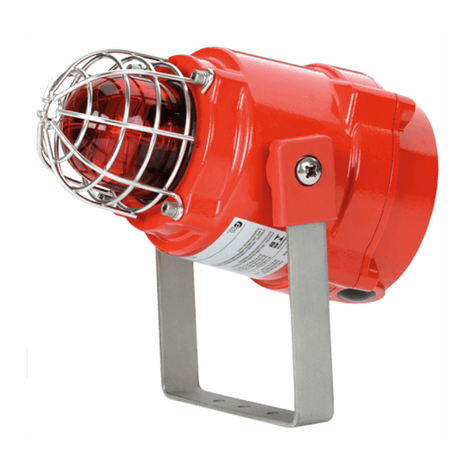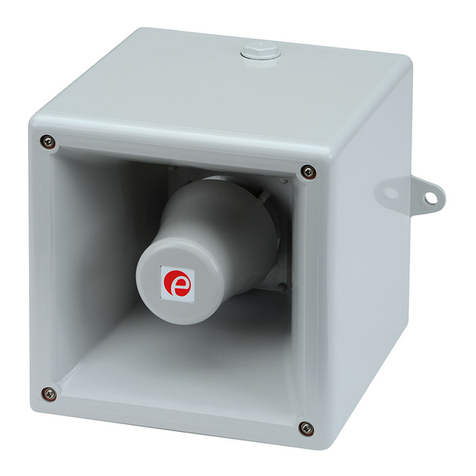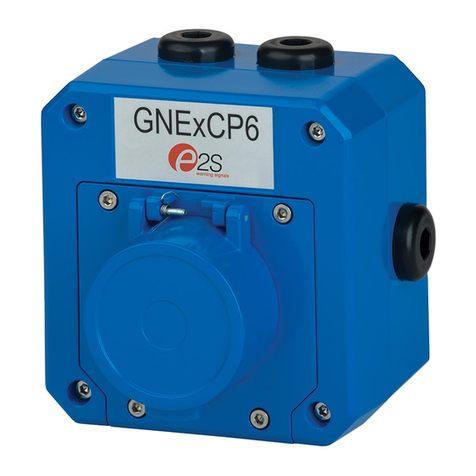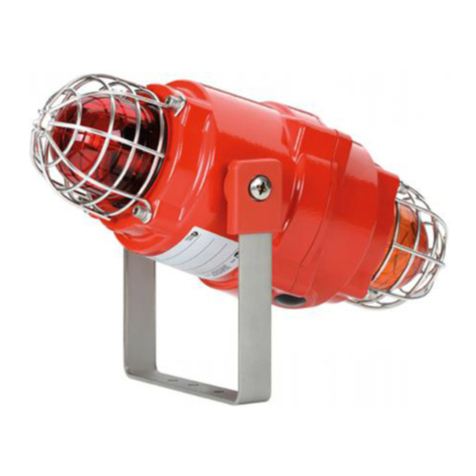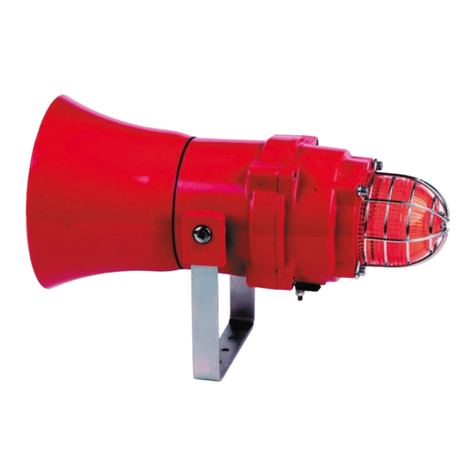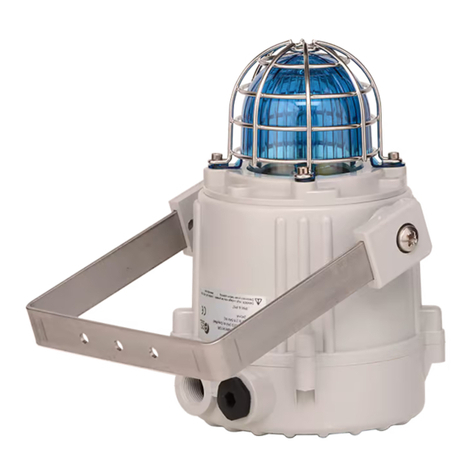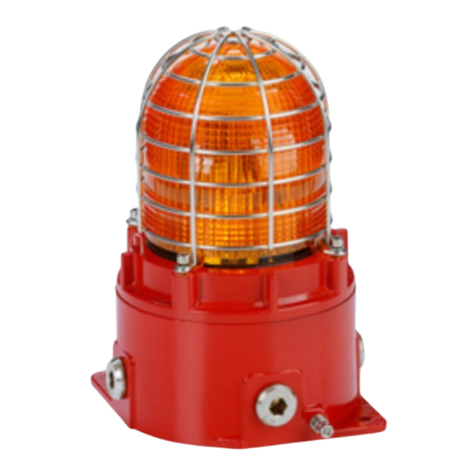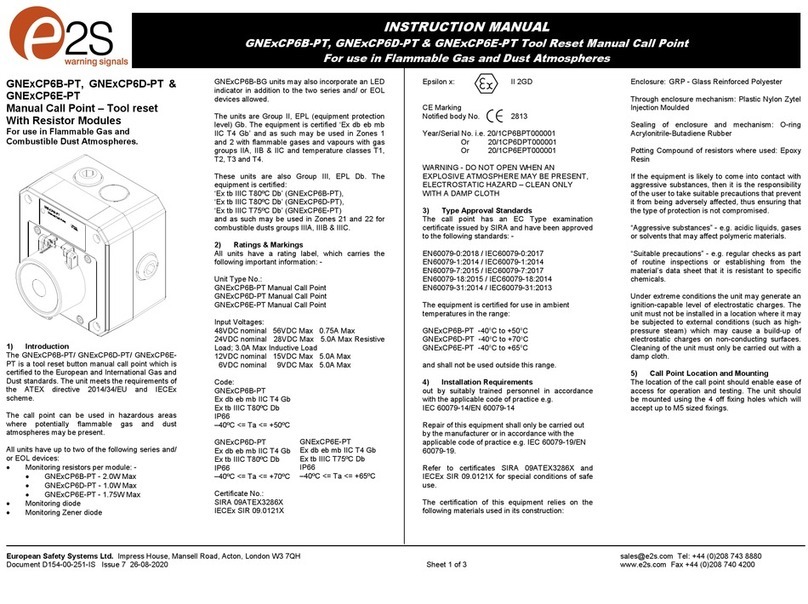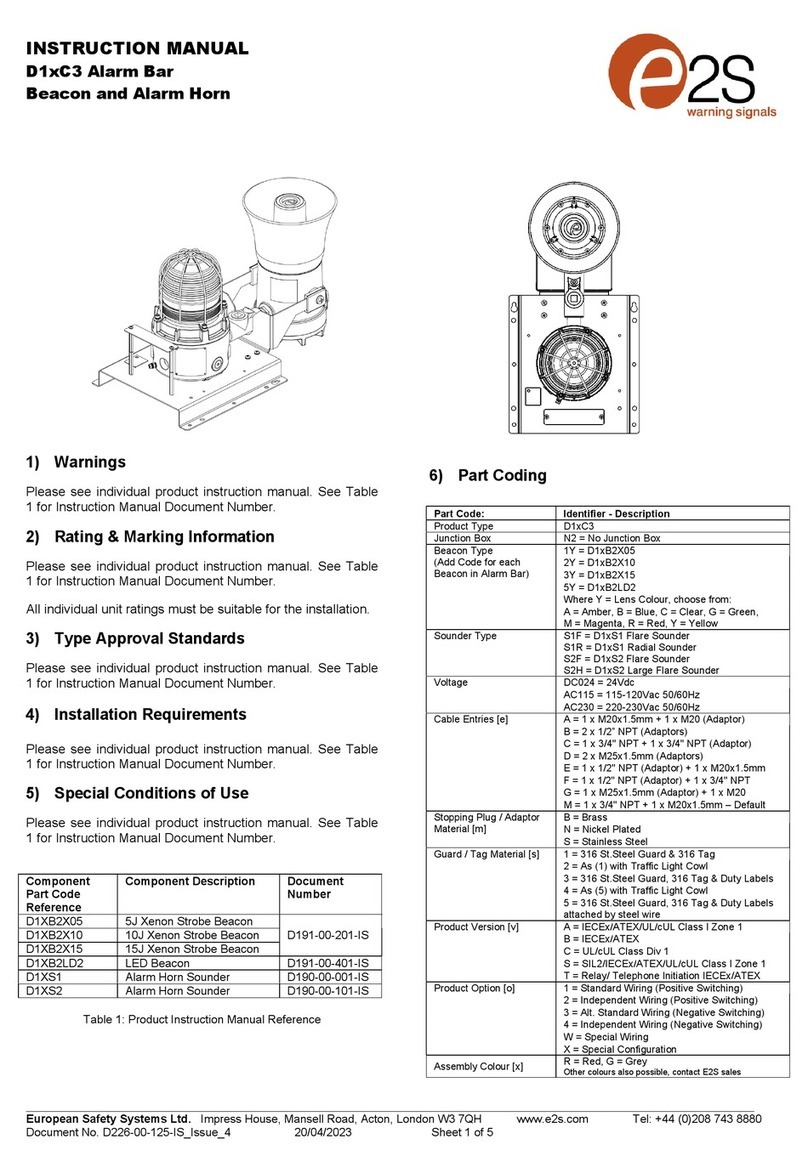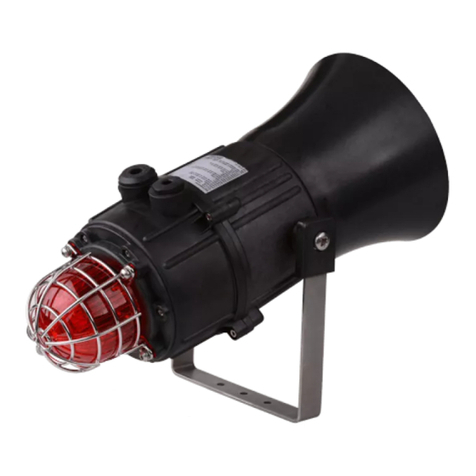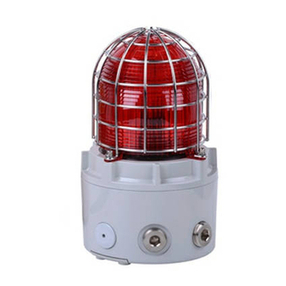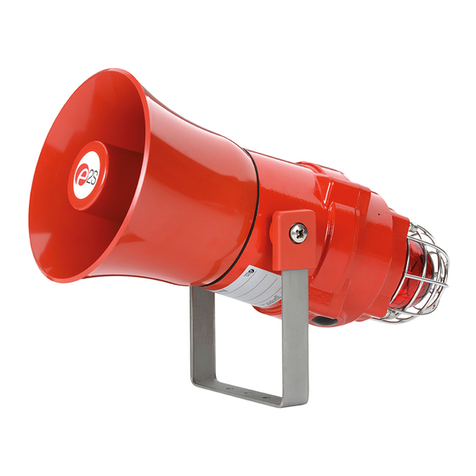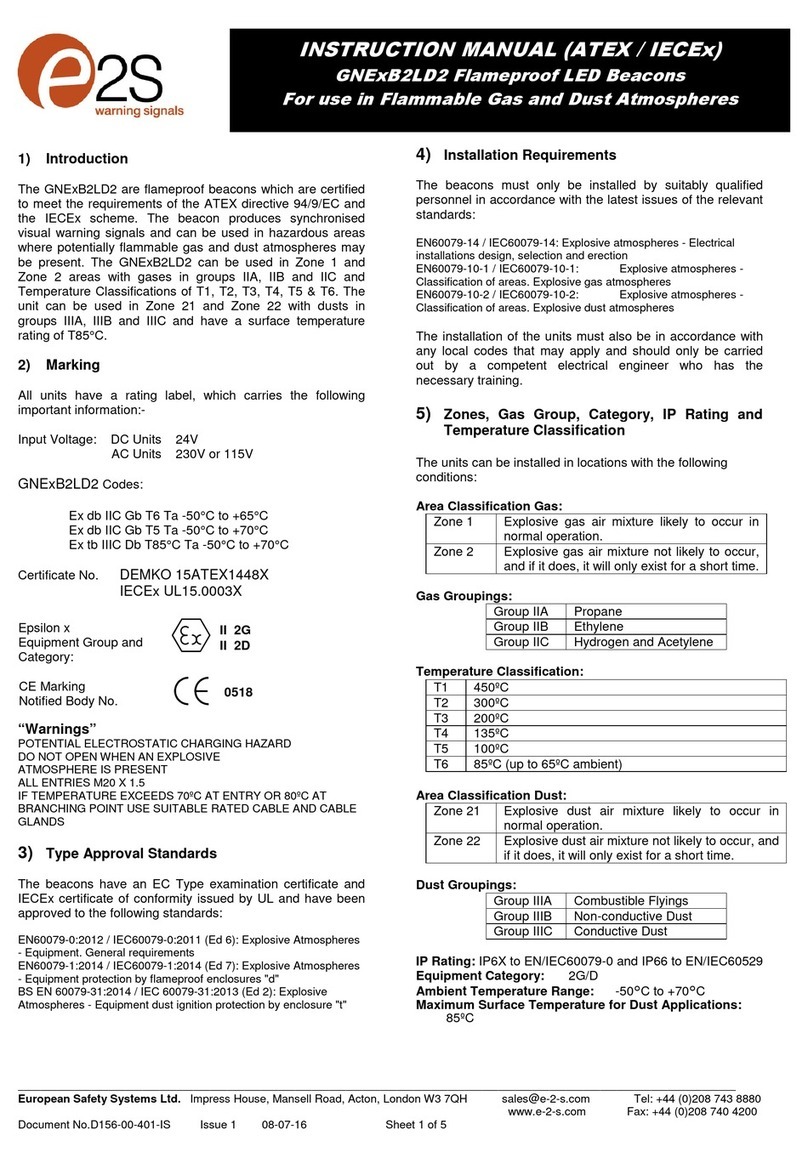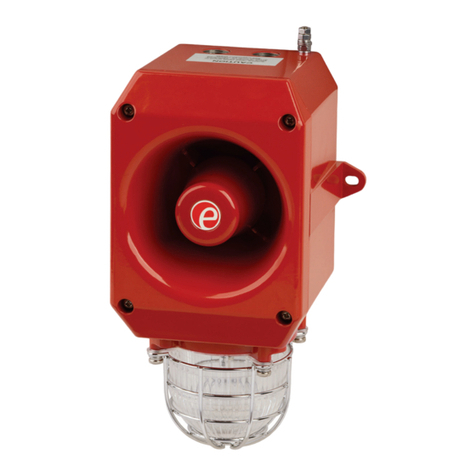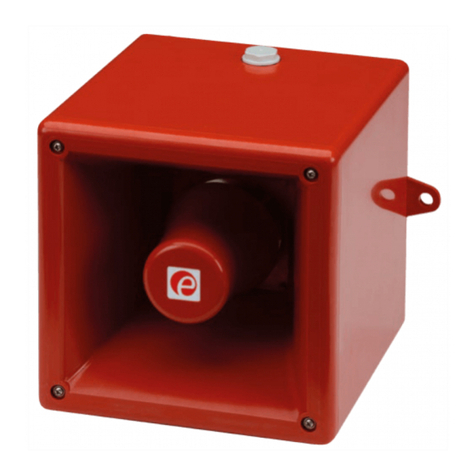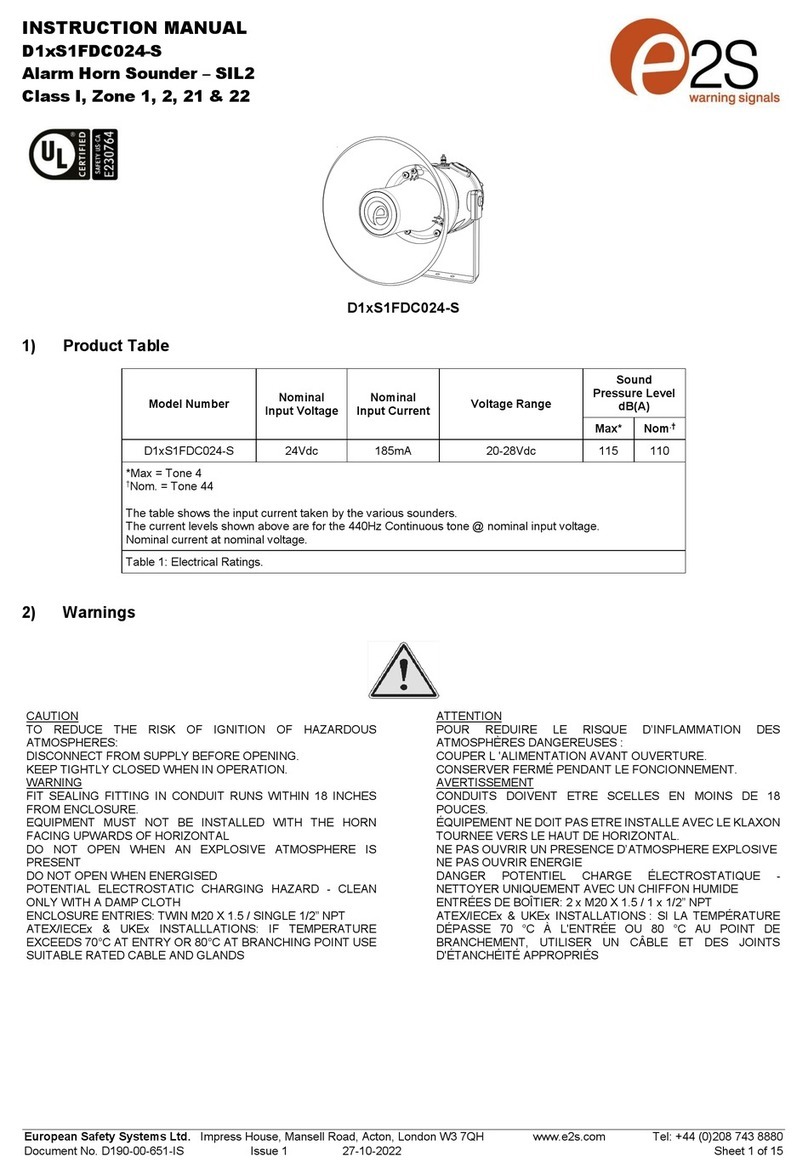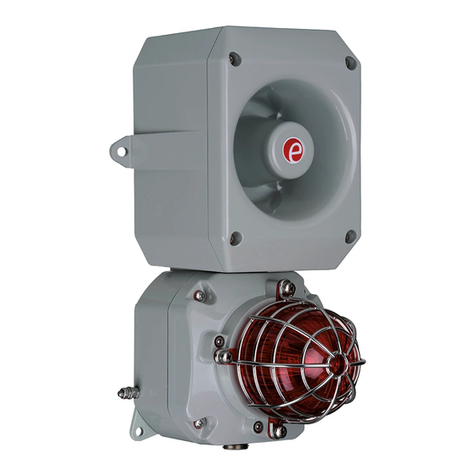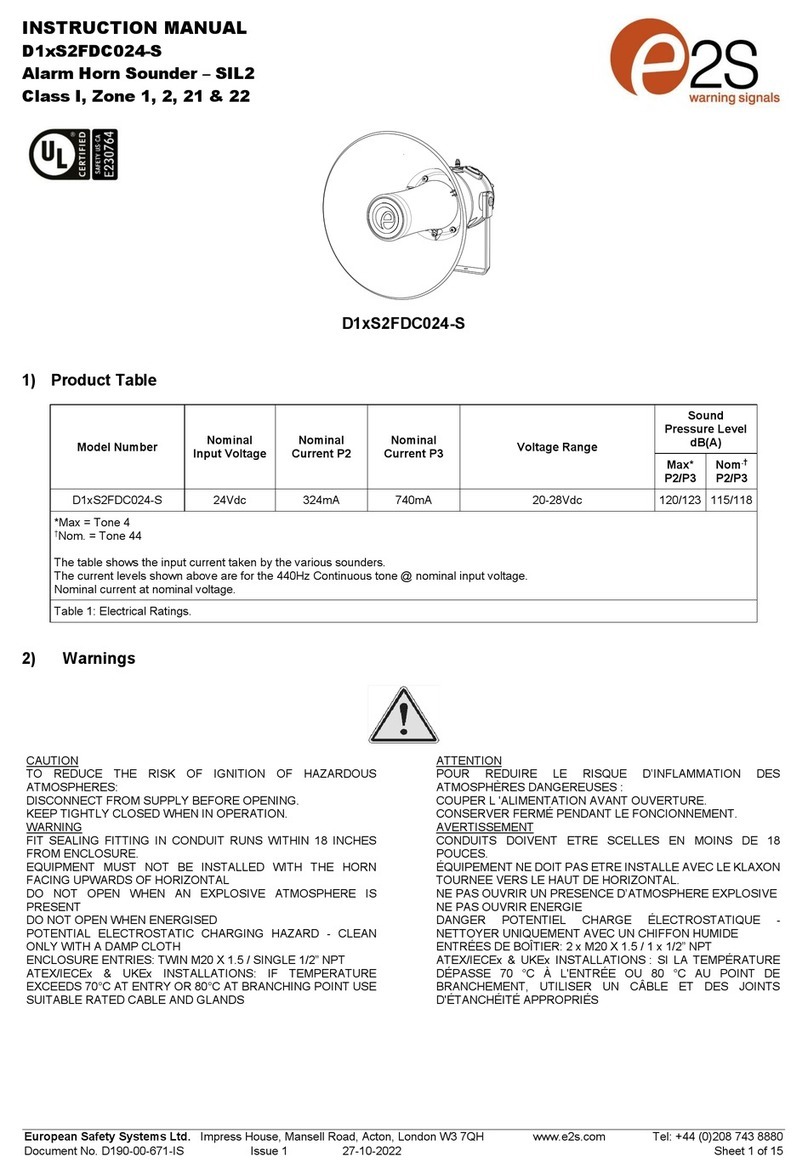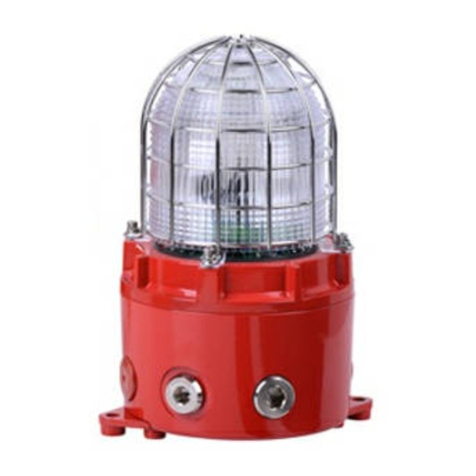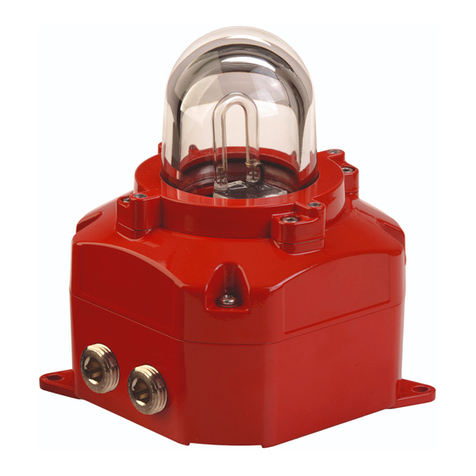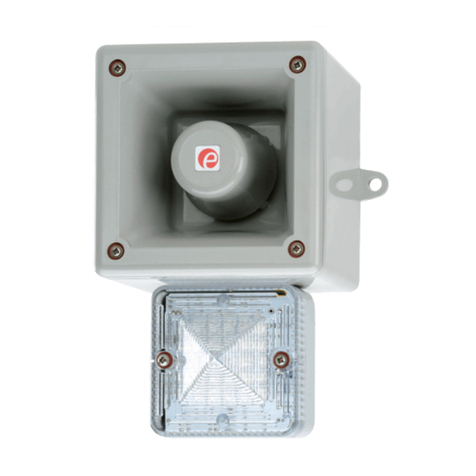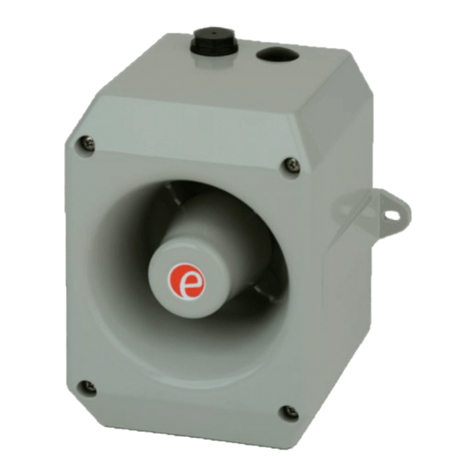__________________________________________________________________________________________________________________
European Safety Systems Ltd. Impress House, Mansell Road, Acton, London W3 7QH sales@e-2-s.com Tel: +44 (0)208 743 8880
www.e-2-s.com Fax: +44 (0)208 740 4200
Document No. D189-00-001-IS Issue: 901-06-16 Sheet 3 of 7
(Ingress Protection) rating is required then a suitable sealing
washer must be fitted under the cable gland. For use in
explosive gas atmospheres a minimum ingress protection
rating of IP54 must be maintained. For use in explosive dust
atmospheres a minimum ingress protection rating of IP64 must
be maintained.
Only the front cover is to be used for access to the enclosure
for installation, service and maintenance. Once the product is
opened, the Type Rating cannot be maintained anymore
unless a full verification of the gasket material is done and
there is no damage.
Connections are to be made into the terminal blocks using
solid or stranded wire, sizes 0.5-2.5mm2 / AWG 20-14. Wire
insulation needs to be stripped 6-7mm. Wires may be fitted
securely with crimped ferrules. Terminal screws need to be
tightened down with a tightening torque of 0.56 Nm / 5 Lb-in.
Internal earthing connections should be made to the Internal
earth terminal on the PCBA. The earth conductor should be at
least equal in size and rating to the incoming power
conductors. The internal earth bonding wire connects the
PCBA earth terminal to the internal earth terminal in the
enclosure back box.
External earthing connections should be made to the M5 earth
stud, using a ring crimp terminal to secure the earth conductor
to the earth stud. The external earth conductor should be at
least 4mm2/ AWG 11 in size.
Check that the earth bonding wire between the two castings is
secure and the ‘O’ ring seal is in place and in good condition.
4.2 Maintenance, Repair and Overhaul
Maintenance, repair and overhaul of the equipment should only
be carried out by suitably qualified personnel in accordance
with the current relevant standards:
EN60079-19 / IEC60079-19 Explosive atmospheres -
Equipment repair, overhaul and reclamation
EN 60079-17/ IEC60079-17 Explosive atmospheres -
Electrical installations inspection and maintenance
Units must not be opened while an explosive atmosphere is
present.
If opening the unit during maintenance operations a clean
environment must be maintained and any dust layer removed
prior to opening the unit.
Electrostatic charging hazard - Clean only with a damp cloth
5) Installation
Fig. 1 Fixing locations.
D2xS1 alarm horn should only be installed by trained
competent personnel.
5.1 Mounting
The D2xS1 alarm horn may be secured to any flat surface
using the two 9.7 x 6.7mm, 147mm pitch fixing holes. The
enclosure provides IP66 protection and is suitable for
installation in exterior locations providing it is positioned so that
water cannot collect in the horn, and the cable entry is sealed.
5.2 Installation procedure
a) Remove Secure the D2xS1 alarm horn to a flat
surface
via the two 9.7 x 6.7mm, 147mm pitch fixing holes in
the mounting feet.
b) Remove the front of the alarm horn by unscrewing the
four captive cover screws and pulling the front away
from the enclosure.
c) Fit an M20x1.5 suitably rated, certified cable gland or
conduit entry into the hole in the enclosure and
connect the field wiring to the appropriate alarm horn
terminals as shown in section 9 and fig 8 (DC) or
section 8 fig 5 (AC) of this manual. The power supply
terminals are duplicated so that alarm horns may be
connected in parallel and for DC units only an end of
line monitoring resistor may be fitted. If the second
M20x1.5 entry is not used a suitably rated, certified
stopping plug must always be fitted.
d) Select the required output tone by positioning the six
switches as shown in Table 1 and Fig 2.
e) Adjust the internal volume control to provide the
required sound level. (Refer to section 6)
f) Check that the O-ring seal in the front cover is in good
condition and not damaged.
g) Replace the front of the alarm horn and tighten the
four captive cover screws.
6) Volume Control
The output level of the D2xS1 alarm horn can be set by
adjusting the volume control potentiometer (see Fig 2). For
maximum output, set the potentiometer fully clockwise.
Fig. 2 Location of field controls
7) Cable Routing and Tone Selection
7.1 Cable Routing
Due to the compact design of the D2x units, it is important that
the user strips off the outer sheath and biases any cables over
the size of 1mm2as shown below.
